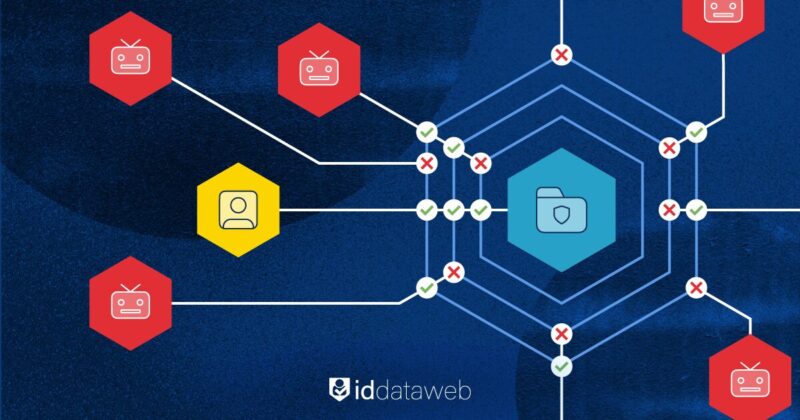Third-party experts bring valued expertise, but they can also bring access management risks that challenge an organization’s security posture. You might entrust your network to a service provider who updates software or maintains critical infrastructure. Yet it only takes one instance of stolen credentials or insufficient oversight to open the floodgates for malicious actors.
High-liability industries—healthcare, aviation, finance, and insurance—are prime targets for attackers because they house valuable personal data and operate mission-critical systems.
That’s why third-party access management is important to consider in any identity security strategy. Understanding exactly who (or what) has access, and to which systems and data. If a vendor’s credentials fall into the wrong hands, your network becomes an open door. So, security professionals must treat third-party users with the same (or stricter) standards reserved for internal staff.
Defining the Third-Party Access Problem
Third-party access refers to external individuals or service providers who require entry into internal networks or data repositories. Unlike employees, these outsiders fall outside direct organizational control. They use their own infrastructure, policies, and sometimes devices. Identity security programs must account for these unknowns.
In certain fields, third-party collaboration is non-negotiable. Hospitals, for instance, often rely on external IT support for advanced equipment. Aviation companies enlist specialized teams to manage flight control software or mechanical overhauls. Financial institutions outsource payment processing to secure external gateways. Insurance firms partner with data analytics vendors or reinsurance brokers. Each of these relationships introduces complexity around identity and access.
Recent data suggests that healthcare leads in third-party breaches, with 41% of reported incidents in 2024 tied to external providers. Attackers have discovered that targeting a partner can be easier than breaching a fortified enterprise head-on. If that partner has fewer security resources, they become low-hanging fruit. A single stolen credential from an unwitting contractor can unlock core systems.
In regulated industries, data security failures trigger not only financial costs but also compliance penalties. Healthcare providers must respect HIPAA requirements for third-party relationships, including business associate agreements. Financial institutions face oversight from regulatory bodies that scrutinize vendor management practices.
A single breach can also lead to lawsuits and insurance claims. When massive amounts of personal data leak, class-action suits often follow. Beyond that, brand trust erodes, especially when patients or customers learn the breach stemmed from a vendor’s negligence. The intangible reputational hit is sometimes the hardest to recover from.
Threat Vectors—where third-party access can go wrong
When an organization grants network access to external vendors, several risks are at play:
Compromised vendor credentials: Attackers target contractor credentials through phishing, brute force, or password reuse. If those credentials have broad privileges, the attack scope widens.
Overprivileged and shared accounts: Vendors sometimes receive credentials that grant them rights beyond their immediate tasks. This amplifies the impact of any breach. Shared accounts further obscure who accessed what and when.
Unmonitored sessions: Some enterprises fail to track vendor sessions in real-time, or do not log external user actions. That gives intruders the cover they need to snoop around.
Orphaned accounts: Projects end, but vendor accounts might remain active. If that dormant credential is discovered by cybercriminals, it becomes an attack vector.
Shadow IT: Employees may independently outsource tasks to smaller external providers who lack strong security controls. Without formal vetting, these partners create stealth backdoors to sensitive data.
When these risks converge, attackers can escalate privileges or move laterally. The initial compromise may look minor, yet once inside, the hacker can hunt for gaps to expand the breach. The ripple effect can be devastating, with potential for extended dwell time and significant exfiltration of sensitive data.
Best practices for mitigating third-party access risk
1. Zero trust frameworks
A “trust nothing, verify everything” mindset limits the damage if a vendor’s access is compromised. Do not automatically trust a partner’s device or user session. Require reauthentication, device posture checks, and continuous monitoring.
2. Principle of least privilege
Provide vendors only the minimum rights needed for their tasks. Confine them to specific systems or data sets. If they do not need admin access, don’t grant it. That approach narrows an attacker’s path.
3. Strong authentication and reauthentication at sensitive touchpoints
Avoid shared accounts. Assign unique credentials to each external user. Enforce multi-factor authentication (MFA) or passwordless methods. This locks down access significantly.
4. Vendor risk assessment
Screen prospective partners thoroughly. Check their security policies, certifications (e.g., ISO 27001, SOC 2), and prior breach history. The contract should outline responsibilities for breach notifications and compliance obligations.
5. Granular network segmentation
Place third-party activities in isolated network segments. If an HVAC vendor only maintains environmental systems, never let them access your point-of-sale environment. Micro-segmentation enforces this boundary.
6. Continuous monitoring
Log and audit all third-party sessions. Use real-time alerts for suspicious behavior. A vendor downloading an unusual amount of data at 3 a.m. should trigger immediate scrutiny.
7. Periodic access reviews
Conduct quarterly or monthly reviews. Confirm that each vendor account is still valid and necessary. Promptly revoke accounts for users who no longer serve a legitimate purpose.
8. Incident response planning
Update breach response protocols to cover external provider incidents. Predefine how you will disable compromised third-party accounts or isolate vendor access. That structure buys you precious minutes when every second counts.
Conclusion
When external breaches occur, downstream ramifications can be massive. In the worst cases, patient safety, customer finances, or flight safety are put at risk.
Future threats will intensify. We will see sophisticated group efforts to exploit software supply chains and advanced spear-phishing campaigns that pivot through vendors. However, a proactive, multi-layered approach can blunt these intrusions. Zero trust policies ensure outsiders never gain blanket trust. IAM and PAM solutions reduce the threat of compromised vendor credentials. Rigorous vendor risk assessments, along with contract stipulations, define strict expectations for data handling.
Security leaders must treat third-party risk as a living program. They should consistently revise policies, monitor external access, and refine incident response strategies. By weaving in structured solutions—like micro-segmentation, continuous monitoring, and privileged session management—teams can achieve deep visibility and robust control.
Ultimately, the security of any organization depends on the strength of each link in its access chain. No one can afford a weak link.











